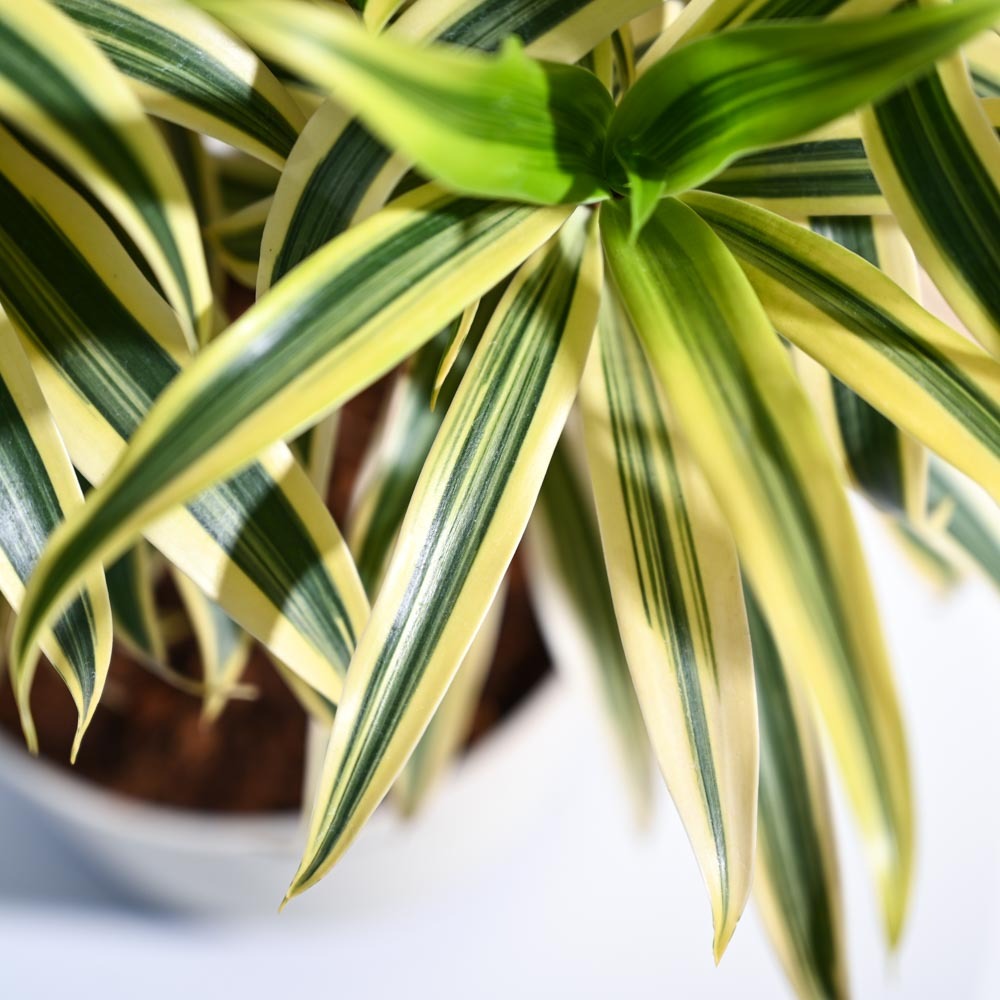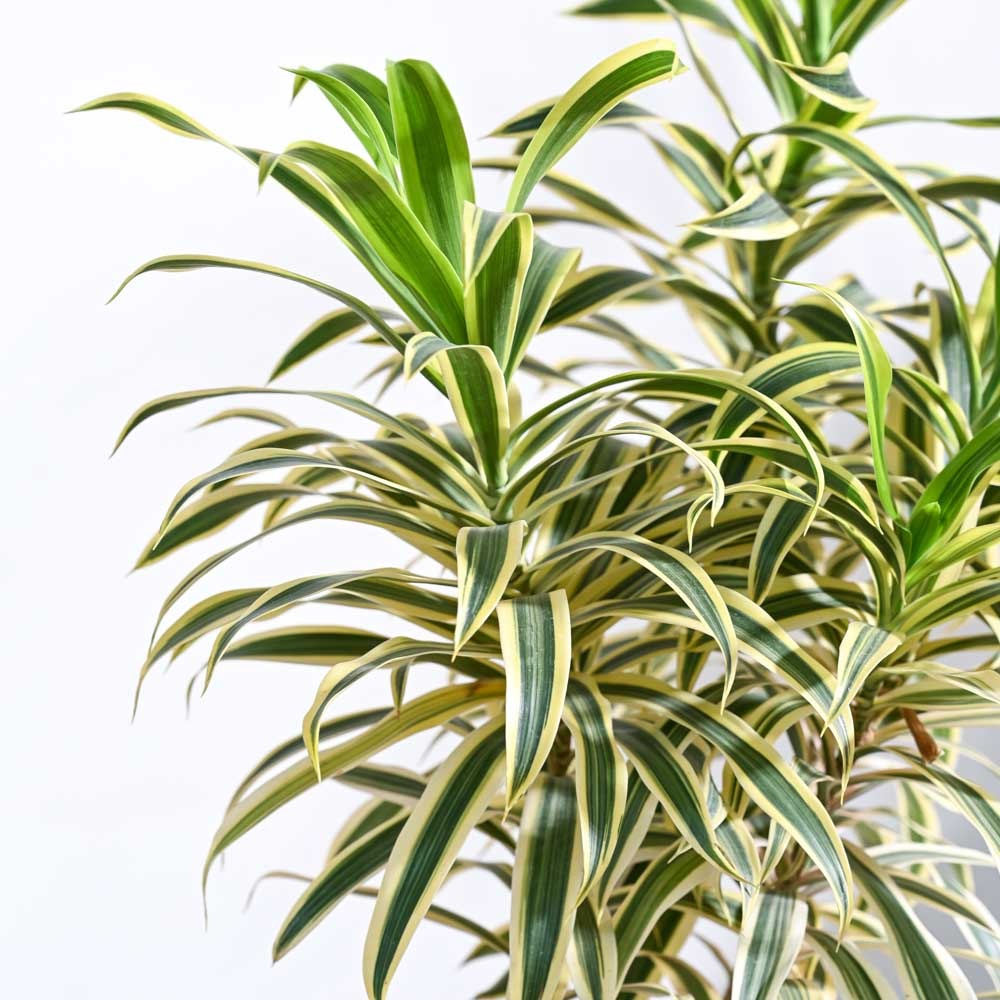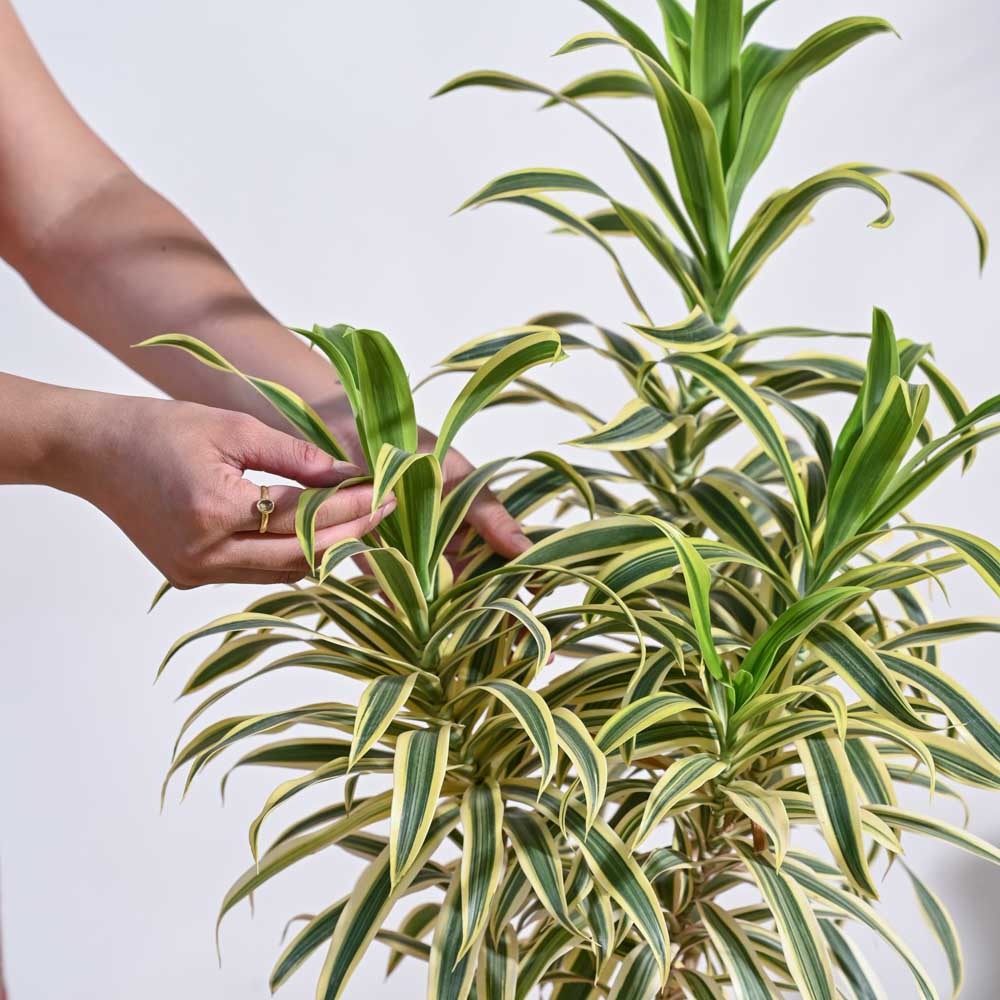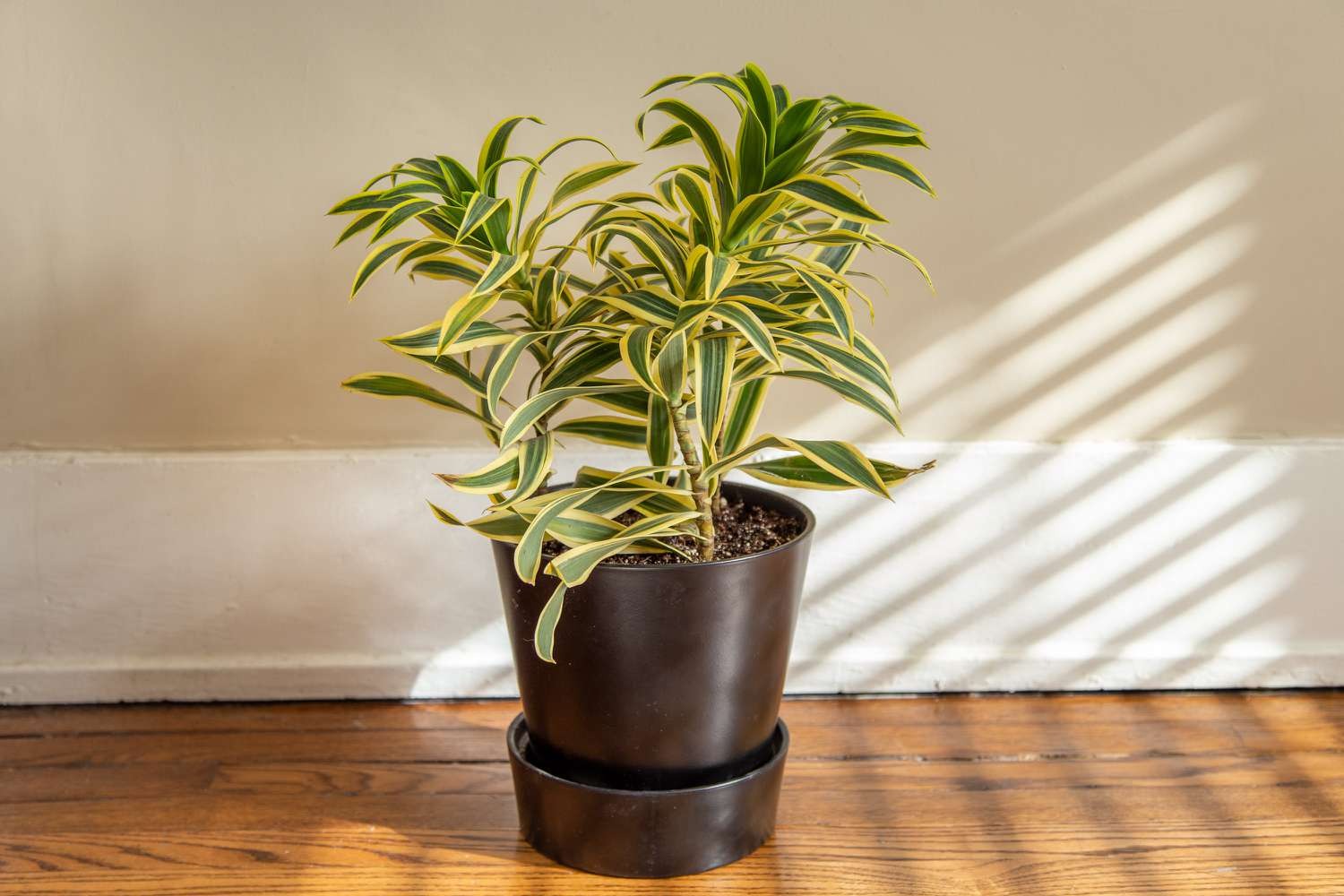The Song of India, also known as Dracaena reflexa is a popular houseplant that belongs to the Asparagaceae family. This upright evergreen shrub can grow up to 6 feet tall indoors. Its long, narrow leaves emerge light green but gradually develop captivating purple and green variegated stripes that have earned it the common name “Song of India.” This easy-to-grow houseplant can thrive indoors with proper care and be a beautiful addition to any home.
| Botanical Name | Dracaena reflexa |
| Plant Family | Asparagaceae |
| Common Name | Song of India, Pleomele |
| Plant Type | Evergreen shrub |
| Mature Size | Up to 6 feet tall |
| Growth Habit | Upright |
| Foliage | Long, narrow leaves with green and purple variegated stripes |
| Sunlight | Bright indirect light |
| Soil | Well-draining potting mix |
| USDA Zones | 10 to 12 (houseplant in other zones) |
| Exposure | Part sun to shade |
Types of Song of India
There are a few popular varieties of the Song of India to choose from:
- ‘Song of Jamaica’ – Features wider leaves with yellow margins along with the purple and green variegation. It has a more compact growth habit.
- ‘Song of India’ – The classic variety with long narrow tricolored leaves in shades of green, purple, and cream. It has an upright growth habit.
- ‘Song of India Variegated’ – Similar to the species plant but with brighter and more defined variegated markings on the leaves.
Getting the Song of India to Bloom


The Song of India houseplant is mainly grown for its fabulous foliage and not its small white flowers. However, you can encourage your plant to bloom by providing optimal growing conditions.
High light, adequate moisture, and warmer temperatures between 65-80°F during spring and summer may help trigger flowering.
Pruning off the growing tips can also promote blooming. But don’t worry if your plant doesn’t flower, as the beautifully variegated leaves are showstoppers on their own!
Caring for Your Song of India


Caring for the Song of India is relatively simple when you meet a few basic needs:
Light
The Song of India thrives in bright indirect sunlight. East or west-facing windows are ideal spots. Provide at least 4 hours of sunlight daily. Insufficient light will cause the plant to lose its variegation and foliage color.
Temperature and Humidity
This tropical plant prefers normal room temperatures between 65-80°F. Keep away from cold drafts. Average room humidity is fine, but higher humidity can support growth. Group plants together or use a humidifier to raise moisture levels.
Soil
Use a well-draining potting mix for houseplants. Aim for soil with good aeration and nutrients. Amend with perlite or orchid bark to improve drainage.
Water
Allow the top inch of soil to dry out between waterings. Water thoroughly until it drains from the pot’s drainage holes. Then allow excess moisture to drain away before returning the pot. Take care not to overwater or leaves may yellow.
Fertilizer
Feed monthly in the growing season with a balanced liquid fertilizer diluted by half strength. This will provide nutrients for growth. Stop feeding over winter when growth slows.
Pruning and Maintenance
Pinch or trim off leggy growth to keep your Song of India full and compact. Pruning regularly will make it bush out nicely. Wipe dust from the leaves to keep it looking its best. Turn the plant periodically so all sides get sufficient light exposure. Repot when it becomes rootbound every 2-3 years in the spring.
Propagating the Song of India
Propagate new Song of India plants from stem cuttings taken in the spring or summer:
- Cut a 6-inch piece below a leaf node.
- Remove lower leaves except for the top two.
- Plant in potting mix. Enclose in a plastic bag for humidity.
- Keep warm and moist until new growth emerges in a few weeks. Then uncover and grow as usual.
Potting and Repotting
House the Song of India in a pot with drainage holes and well-draining soil. Choose a container that is only slightly larger than the root ball, allowing some room for expansion. Repot every 2-3 years in spring to provide fresh soil and space for root growth. Go up just 1-2 inches larger in pot size each time. Handle the roots gently when repotting to avoid damage.
Common Problems With Song of India
This versatile plant is quite robust when given proper care. However, issues can arise if cultural needs aren’t met:
Leaf Yellowing
Yellow leaves typically indicate overwatering or insufficient light exposure. Check the soil moisture before watering – if it’s still damp, hold off until it dries more. Yellow leaves can also mean not enough sunlight. These plants need at least 4 hours of bright indirect light daily for the foliage to remain green and vibrant. Move to a spot with more sunlight. Trim off any very yellow leaves.
Leaf Drop
Leaf drop is often caused by underwatering, low humidity, or cold drafts. Check soil moisture and water thoroughly if dry. Use a humidifier and group plants to increase humidity. Keep away from AC vents or drafty windows. Losing bottom leaves is normal, but excessive leaf drop means adjusting care.
Leggy Growth
When the Song of India gets stretched out and leggy, it’s due to insufficient light. These plants need bright filtered light to stay compact. If it gets lanky, move it closer to a sunny window or supplement it with a grow light. Prune back overgrown stems to encourage bushier regrowth. Rotating the plant can also ensure even exposure.
Loss of Leaf Variegation
The unique variegated striping on the leaves can fade or disappear if light levels drop too low. It can also indicate nutrient deficiencies. Ensure the plant gets enough sunlight to maintain the colorful foliar patterns. Fertilize in the growing season and repot in fresh soil as needed.
FAQs
Yes, the Song of India is a popular houseplant in temperate climates. Its tropical origins make it perfectly suited to growing happily indoors.
It gets this exotic common name from its brightly patterned foliage, which is reminiscent of the vibrant colors seen in traditional Indian clothing and textiles.
This low-maintenance, air-purifying plant can enhance indoor spaces with its bold purple and green variegated leaves. It also helps filter toxins like formaldehyde from the air.
While both have striking variegated leaves, the Song of Jamaica has wider foliage with bright yellow leaf margins. It also stays more compact compared to the taller, strappy leaves of the Song of India.
